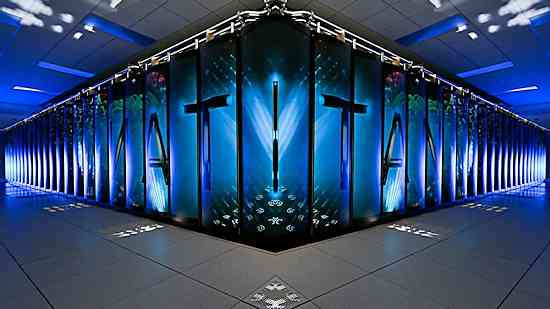
On April 9, 2015, the United States Department of Energy announced that it will push forward with the granting of an award that will further promote the U.S.’s leadership in exascale computing. Under the Collaboration of Oak Ridge, Argonne, and Lawrence Livermore (CORAL) initiative, the DOE will invest $200 million to develop a new supercomputer and have it installed in the Argonne Leadership Computing Facility at Argonne National Laboratory.
The next-generation computing machine, which is called “Aurora”, will be manufactured by supercomputer giant Cray. The company has become known for its lucrative government and commercial contracts in the past years and its development of supercomputers with world-renowned chip maker Intel.
Aurora is remarkable not just because of the amount of money that’s being put to it, but also because of its impressive specifications and its breath-taking potential. As one of the most powerful pre-exascale supercomputers to be ever created, it’s expected to reach a peak performance of 180 petaflops and become one of the fastest and most powerful computing machines ever made.
If this doesn’t seem too impressive, it’s important to take note that average modern computers — depending on the hardware — are capable of achieving up to 2,600 gigaflops. Some of the world’s current supercomputers, namely the Sequoia machine at the National Nuclear Security Administration and the Titan at the Oak Ridge National Laboratory, have a peak performance of 20 petaflops and 27 petaflops, respectively.
Aurora will be built with Intel’s third-generation processor named Knights Hill. Even though it’s still in development and Intel has not said much about it, this system framework is expected to have breakthrough performance, be highly compatible with a massive range of applications and prove itself to be more power-efficient than today’s supercomputers. It’s also highly scalable and adaptable and can therefore pave the way to new scientific discoveries that will have a global impact.
The Aurora contract is the third and final pre-exascale class system that has been funded for the CORAL initiative. Earlier, the Department of Energy announced that it’s investing around $325 million to develop state-of-the-art supercomputers for two other laboratories. Oak Ridge National Laboratory is set to receive Summit (which theoretically can reach 150 to 300 peak petaflops) in 2017. In the same year, Lawrence Livermore National Laboratory will get its supercomputer named Sierra, which will have a peak performance of 100 petaflops.
Aurora is scheduled to be installed at Argonne Leadership Computing Facility in 2018. But, prior to that, Intel and Argonne will collaborate to come up with an interim system (which will be named Theta) in 2016. This system will help the ACLF community in transitioning their programs and applications to the new technology and ensuring they’ll retain all important data when Aurora will be rolled around.
Argonne National Laboratory’s supercomputer will mainly be used to boost the performance of computing applications that are valuable to the Department of Energy as well as other agencies. It will also be available to everyone in the scientific community to attract the country’s best researchers to Argonne and help in developing other industries like materials science, biological science, renewable energy and transportation efficiency.